Home | Tours | Trip Reports | News | Team | Calendar | Links | Contact | Store | Mailing List

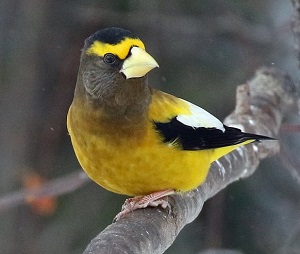 MINNESOTA
MINNESOTABoreal Winter Birding Special
with Frank Nicoletti
February 20 - 25, 2025
Contact [email protected] to reserve your space!
Trip Cost & Travel Planning> Registration Form>
Tour Registration, Terms, Cancellation Policies>
Despite its frigid reputation, Duluth has long been an attractive winter site for visiting birders in search of the unique birds that winter around the city and its environs. Ruffed Grouse, Snowy Owl, Northern Shrike, Boreal Chickadee, Bohemian Waxwing, Pine and Evening Grosbeaks, and Common Redpoll can be expected even in a relatively short visit. There can also a good chance to see Spruce and Sharp-tailed Grouse, Great Gray Owl, Northern Hawk-owl, Black-backed Woodpecker, both White-winged and Red Crossbills, and Hoary Redpoll. Even rarities such as Gyrfalcon, Boreal Owl, and American Three-toed Woodpecker are other hoped-for possibilities (though don't occur every year).
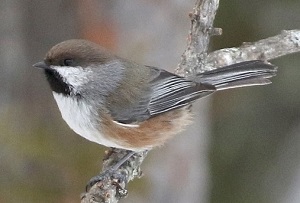
Yes, it's chilly, we're talking serious winter birding here, but the birds are worth it. Frank knows every spot for the best chance to see them. With sunshine, minimal winds, and the right winter gear, conditions can be reasonably pleasant. Even the coldest days are tolerable, since virtually all of the birding is along roadsides, in or near the warmth of our vehicles.
Our itinerary features four full days visiting places like the famed Sax-Zim Bog area, Lake County, and Cook County in the arrowhead region on Minnesota. Possible species include Great Gray and Northern Hawk-Owl, Black-backed and American Three-toed Woodpecker, Boreal Chickadee, Ruffed, Sharp-tailed and Spruce Grouse, Northern Shrike, Black-billed Magpie, White-winged and Red Crossbill, Pine and Evening Grosbeak, Canada Jay, Common and Hoary Redpoll, and more!
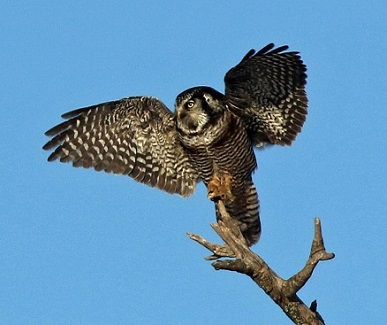
Experience the wonders of winter boreal birding with
expert Duluth guide, Frank Nicoletti.
I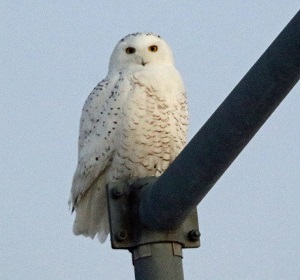 TINERARY
TINERARY
Day 1: Arrival in Minneapolis, Minnesota
Plan to be picked up at the Minneapolis-St. Paul Airport in Minneapolis, Minnesota (Airport code: MSP) this morning, the earlier the better. From here we will spend a few hours looking for Trumpeter Swan and assorted ducks as well as Long-eared and Saw-whet Owls. Then we will make our way north toward Duluth. 5 Nights Duluth.
Days 2-5: Duluth-Superior and Northeastern Minnesota
Within the city limits of Duluth itself and Superior, Wisconsin across the bay, one may find many of the specialties we seek without having to venture into more remote areas. At feeders and mountain ash trees in residential areas, Bohemian Waxwings, Pine Grosbeaks, and Common Redpolls can often be expected; in most years, a Varied Thrush, some Red or White-winged Crossbills, and a Hoary Redpoll or two are also present in or around Duluth itself.
Meanwhile, waste grain around the grain elevators in the Duluth-Superior harbor area creates, in effect, a giant feeding station, one which attracts small mammals and Rock Pigeons. These, in turn, attract raptors. A Snowy Owl or two typically winter here, and even in unproductive years at least one of these can usually be found somewhere in the area. A few hawks also overwinter in the harbor, mostly Red-taileds, but in some recent years a Peregrine or even a Gyrfalcon has settled in for the season, subsisting on pigeons.
Over at the landfill in Superior, if the weather has not been too severe, a good concentration of gulls normally survives the winter. Among the predominant Herring Gulls, at least a few Glaucous and Iceland’s are usually present, along with an occasional Great Black-backed Gull.

On at least one day, we will head north out of town into the vast boreal forests of spruce, balsam fir, and pine in the Superior National Forest. The best and most accessible examples of this habitat lie northeast of Duluth along Lake County Road 2 and Minnesota Highway 1. Spruce Grouse are sometimes spotted at dawn along these roadsides as they scratch for salt and grit. In some winters, flocks of a dozen or more individuals of this highly elusive grouse have been seen. Ruffed Grouse, Black-backed Woodpecker (plus the rarer American Three-toed), Common Raven, Gray Jay, Boreal Chickadee, and winter finches are also regularly-seen residents in these same forests. It is also possible to spot Moose, Porcupine, and Snowshoe Hare as we bird here, and with a lot of luck we might even glimpse a Gray Wolf, Ermine, or Pine Marten.
Day 6: Departure for Home.
If there is time, we can bird the Duluth area for any birds not yet seen on the tour before heading to the Minneapolis airport (Code: MSP) for flights out. We plan to arrive at MSP by 1 PM so flights out can be after 4 PM.
WHAT ABOUT THE WEATHER?
The average high temperature in Duluth during February is in the mid-20s, with the average low in the single digits. Unless it’s windy, most participants should be able to handle such days without too much difficulty. However, cold fronts with brisk winds are also possible, and days with lows in the minus 20s or even lower and “highs” remaining below zero do occur. Wind chills in the minus 30s and minus 40s can occur. While Northern Minnesota does get its share of snow, storms serious enough to preclude birding activity are infrequent, with even the back roads promptly and efficiently plowed.
CLOTHING
Although almost all our birding will be from the warmth of the van, be sure to pack the warmest clothing you can find. Bring thermal underwear, heavy sweaters, and a warm coat, and you’ll find the best strategy is to dress in layers. Of course, bring a warm hat and scarf or neck gaiter to cover the ears and neck. Fingers and toes will be the most vulnerable to the cold. Mittens generally work better than gloves, and insulated boots and warm socks are a must.
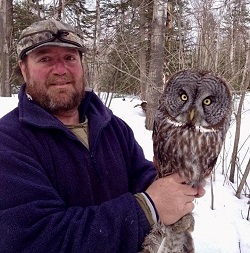 TOUR LEADER: Frank Nicoletti
TOUR LEADER: Frank Nicoletti
Frank Nicoletti grew up in New York State along the Hudson River where he started watching raptors at the age of 11. His passion for raptors and birds fueled him to work at various locations including Cape May and Sandy Hook NJ, Braddock Bay NY and in Israel. From 1984 until 1996 he traveled and conducted various raptor projects. He arrived in Duluth in 1991 to count raptors and the Northern Goshawk invasion which he conducted until 2005. He moved permanently to Duluth in 1996, and conducted the first spring count of raptors migrating north in Minnesota. Frank has continues to work at Hawk Ridge Bird Observatory as the senior biologist. He has published a number of papers on birds and has helped with many authors working on books and articles. Frank lives just north of Duluth with his wife, Kate.
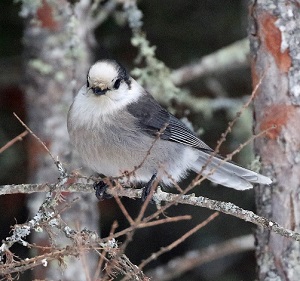 MINNESOTA MINNESOTABoreal Winter Birding Special with Frank Nicoletti February 20 - 25, 2025 Contact [email protected] to reserve your space! Registration Form> TOUR PRICE: $2295.00 per person based on double occupancy and a minimum of 8 persons from Minneapolis, Minnesota. (Airport code: MSP). Single
supplement: $525.00 per person based on availability Deposit: $750.00
per person
per tour.
Note:
Tour deposits
can be
paid by
credit
card via
PayPal.
Use this link to
make your credit card payment. Please
advise [email protected]
when you have made payment. Included in cost: All
accommodations,
all breakfasts and all lunches during the tour, two dinners (Days 1 & 5), guide
services
as stated
in the
itinerary,
private
ground
transportation
during
the tour,
and park
entrance
fees. Not
included: Flights, tipping,
travel insurance, excess baggage
charges, 3 dinners (ask about the all meals included option for an additional $150 pp), private
excursions, à la
carte dishes,
snacks, drinks,
laundry,
telephone
calls and
anything else
of a purely
personal
nature. Also,
any and all
costs arising
from pandemic
or Covid-19
related issues
are not included
in the tour
cost and are
the sole responsibility
of the traveler.
These include,
among others,
the costs
of Covid treatment,
hospitalization,
medical fees,
transport,
meals and
accommodation
in case of
illness or
quarantine,
and the costs
of any Covid
tests needed
before, during
and after
the tour.
Once
the tour is
confirmed to
go ahead, we
will send you
information
about booking
your flights.
**Please
note: Tour prices
are based on
quoted costs
from ground operators, estimated
fuel costs, and
other costs known at the time of itinerary
publication.
The erratic nature
to global financial
markets makes
it difficult
to predict changes
in costs and
currency
exchange rates
over the long
term. Since tours
are priced well
in advance of
the actual operation
of the tour,
tour costs, fuel
costs and exchange
rates can change,
sometimes drastically.
Depending on
the extent of
such changes,
it may be necessary
to implement
a surcharge on
this tour. If
a surcharge is
necessary, every
effort will be
made to minimize
the amount. Cancellations
and Refunds:
TRIP INSURANCE: PLEASE NOTE:
|
Phone: 203.453.6724